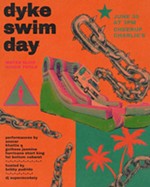SXSWi: It's Not TV, It's Social TV
TV is dead. Long live TV!
By Belinda Acosta, 8:10AM, Sun. Mar. 13, 2011
Starring: Fred Graver, The Travel Channel; Lila King, CNN iReport; Gavin Purcell, Late Night with Jimmy Fallon; Chloe Sladden, Twitter; Tim Shey, Next New Networks.
With special guests: Delicious, fresh-baked Krispy Kreme donuts.
The caffeine hadn’t fully kicked in but there was a mild buzz at this early, Saturday morning panel. And then, the donuts arrived—a pleasant, sugary-glazed gesture—thanks to the panelists. But the donuts were also an example of what this panel of TV/new media professionals were about to convey: When it comes to new media initiatives in TV, it’s always about audience engagement. Getting viewers involved in a way that piques their interest and encourages a response is key. It’s not just throwing information at them, and it’s not about getting a couch potato at home to order a pizza online (as early Interactive TV folk used to profess). In short, when it comes to social media and TV, it’s about having a two-way conversation with the audience.
Panelists shared their social media + TV success stories:
Fred Graver explained how No Reservations star Anthony Bourdain did his first live tweet during the recent season premiere of his series. Prior to that, No Reservations had 3,000 Twitter followers. Six thousand new followers were gained during the live tweeting event alone—proof that new media is not just for the “Twitter generation,” a common complaint among TV folk who are (still) resistant to new media.
Lila King explained how CNN’s iReport works. A veteran of Current TV, which was built on audience-generated news reports, King is doing more of the same with iReport (ireport.cnn.com). Once vetted and verified, viewer-created reports are shared on CNN. It’s one thing to get an official CNN reporter’s take on breaking news, but viewer generated reports add another slant to a story, giving it a personal face.
One of King’s proudest moments was in the early days of the 2010 Haitian earthquake. As viewer provided photos of the missing were being streamed during The Situation Room, a person at a refugee camp (who was watching online) recognized one of the missing (she was standing nearby), fetched her, and helped reunite the missing woman with her loved ones. iReport was the conduit.
As a member of the “Twitter generation,” talk show host Jimmy Fallon was an early adopter of new media, Gavin Purcell said. Fallon regularly tweets and uses Twitter to actively engage with audiences through #Latenight Hashtags. In this, a Twitter hashtag is announced on the show and online (a good example is #awwhellno). Audiences are then invited to respond to it. The cleverest responses are selected and read by Fallon on his show later in the evening. The game is highly interactive and fast. A similar bit on The Tonight Show with Jay Leno, sharing goofy newspaper headlines and other print media gaffes is dependent on snail mail. The top 10 list on Late Night With David Letterman is faster, but does not have the same, direct audience engagement.
“It’s difficult to drag the old media machine to do all this new stuff,” Gavin said. Part of the resistance may be because TV folks are trying to solve the wrong problem. Although it’s understood that DVRs enable delayed viewing, TV viewing in real time is still a measure of a show’s success (i.e. high viewer ratings = higher ad sales and at a higher rate). Online audience engagement is not stealing eyes from the TV screen to the computer screen, the panelists concurred. It’s more like throwing out a line and reeling it back into the show.
“TV and Twitter have had a special relationship from the beginning,” Twitter’s Chloe Sladden said. In spite of delayed viewing or time zone differences between the east and west coast (making live tweeting a challenge), she believes that “linear TV is not dead but is now having a resurgence,” because of Twitter’s ability to get viewers to tune in, in real time, especially for premieres or special events like the recent Oscar telecast.
Here’s a thought: Perhaps social media—not TV executives or time zones—will begin to set the TV schedule in the future. For TV to remain a viable entertainment and news resource, it must stay relevant. It’s clear that future programming must be designed with interactivity in mind from the beginning and not as an afterthought. In the end, the goal is the same as it’s ever been: to keep a show in viewers’ heads longer. According to these new media and TV professionals, Twitter and other new media are just the beginning to that end.
A note to readers: Bold and uncensored, The Austin Chronicle has been Austin’s independent news source for over 40 years, expressing the community’s political and environmental concerns and supporting its active cultural scene. Now more than ever, we need your support to continue supplying Austin with independent, free press. If real news is important to you, please consider making a donation of $5, $10 or whatever you can afford, to help keep our journalism on stands.
Jordan Smith, March 11, 2014
Neha Aziz, Feb. 20, 2014
SXSW Interactive, TV, social media, SXSW











